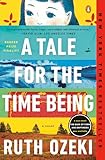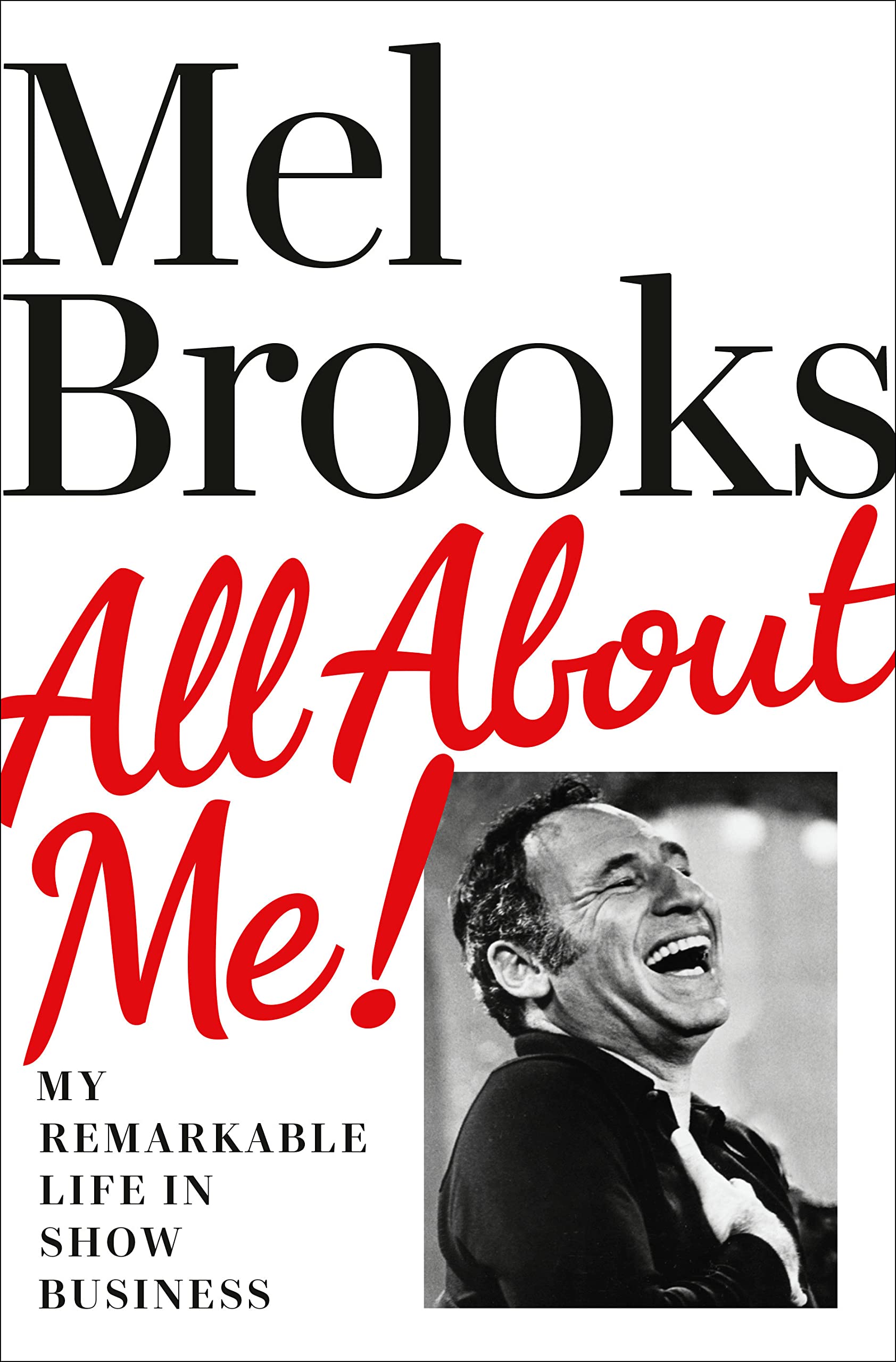
Is there such a thing as literary science fiction? It’s not a sub-genre that you’d find in a bookshop. In 2015, Neil Gaiman and Kazuo Ishiguro debated the nature of genre and fiction in the New Statesman. They talk about literary fiction as just another genre. Meanwhile, Joyce Saricks posits that rather than a genre, literary fiction is a set of conventions.
 I’ve not read a whole lot of whatever might be defined as literary fiction. I find non-genre fiction a little on the dull side. People — real people — interacting in the real world or some such plot. What’s the point of that? I want to read something that in no way can ever happen to me or anyone I know. I want to explore the imagination of terrific authors. I’ve heard that literary fiction is meant to be demanding. I don’t mind demanding, but I want, as a rule, a stimulating plot and relatable or, at the very least, interesting characters. I suspect My Idea of Fun by Will Self (1993) is the closest I’ve come to enjoying a piece of literary fiction, but I was far from entertained. And so I read genre fiction — mostly science fiction, but anything that falls under the umbrella of speculative fiction.
I’ve not read a whole lot of whatever might be defined as literary fiction. I find non-genre fiction a little on the dull side. People — real people — interacting in the real world or some such plot. What’s the point of that? I want to read something that in no way can ever happen to me or anyone I know. I want to explore the imagination of terrific authors. I’ve heard that literary fiction is meant to be demanding. I don’t mind demanding, but I want, as a rule, a stimulating plot and relatable or, at the very least, interesting characters. I suspect My Idea of Fun by Will Self (1993) is the closest I’ve come to enjoying a piece of literary fiction, but I was far from entertained. And so I read genre fiction — mostly science fiction, but anything that falls under the umbrella of speculative fiction.
It turns out that some of what I’ve read and enjoyed and would recommend might be called literary science fiction. This is sometimes science fiction as written by authors who wouldn’t normally write within the genre, but more often than not regular science fiction that has been picked up by a non-genre audience. Literary fantasy is not so common as literary science fiction, but there is a lot of fantasy, both classical and modern that non-fantasy fans will be familiar with (many are put off by the label “fantasy,” and maybe an awful lot of terrible 1980s fantasy movies). Of course there are J.R.R. Tolkien’s books and the Chronicles of Narnia and Virginia Woolf’s Orlando. These books are only the briefest glimpses into both the imagination of some terrific authors and the scope of fantasy fiction. It isn’t all about hobbits and lions and wizards. There’s much more to explore.
You’ve likely read most of these examples; if they’ve piqued your interest and want to explore more genre fiction, here are some suggestions for next steps.
You read:
 Super Sad True Love Story (2010) by Gary Shteyngart is a grim warning of the world of social media. There’s not a whole lot of plot, but Shteyngart’s story is set in a slightly dystopic near future New York. There are ideas about post-humanism, as technology is replacing emotional judgement — people don’t need to make choices; ratings, data, and algorithms do that for you. As an epistolary and satirical novel Super Sad True Love Story engages well. The science fiction elements are kept to the background as the characters’ relationships come to the fore.
Super Sad True Love Story (2010) by Gary Shteyngart is a grim warning of the world of social media. There’s not a whole lot of plot, but Shteyngart’s story is set in a slightly dystopic near future New York. There are ideas about post-humanism, as technology is replacing emotional judgement — people don’t need to make choices; ratings, data, and algorithms do that for you. As an epistolary and satirical novel Super Sad True Love Story engages well. The science fiction elements are kept to the background as the characters’ relationships come to the fore.
Now try:

 Ready Player One (2011) by Ernest Cline. In Cline’s near future, like Shteyngart’s, there is economic dystopic overtones. Most folk interact via virtual worlds. In the real world, most people are judged harshly. Wade spends all his time in a virtual utopia that is a new kind of puzzle game. Solving clues and eventually winning it will allow him to confront his real-world relationships. Friendships are key to the enjoyment of this novel, as well as how technology alters our perception of them. Are we the masters or servants of technology?
Ready Player One (2011) by Ernest Cline. In Cline’s near future, like Shteyngart’s, there is economic dystopic overtones. Most folk interact via virtual worlds. In the real world, most people are judged harshly. Wade spends all his time in a virtual utopia that is a new kind of puzzle game. Solving clues and eventually winning it will allow him to confront his real-world relationships. Friendships are key to the enjoyment of this novel, as well as how technology alters our perception of them. Are we the masters or servants of technology?
Snow Crash (1992) by Neal Stephenson is a complex and knowing satire. The world is full of drugs, crime, nightclubs, and computer hacking; “Snow Crash” is a drug that allows the user access to the Metaverse. Stephenson examined virtual reality, capitalism, and, importantly, information culture and its effects on us as people — way before most other authors. Like Cline and Shtenyngart, technology — in this case the avatars — in Snow Crash is as much a part of the human experience as the physical person.
You read:
 Never Let Me Go (2005) by Kazuo Ishiguro is one of the best and most surprising novels in the science fiction genre. It is the story of childhood friends at a special boarding school, narrated by Kathy. Slowly the world is revealed as a science fiction dystopia wherein where the privileged literally rely on these lower class of people to prolong their lives. The science fiction-ness of the story — how the genetics work for example — is not really the purpose of the story. Ishiguro writes brilliantly about what it means to be a person and how liberty and relationships intertwine.
Never Let Me Go (2005) by Kazuo Ishiguro is one of the best and most surprising novels in the science fiction genre. It is the story of childhood friends at a special boarding school, narrated by Kathy. Slowly the world is revealed as a science fiction dystopia wherein where the privileged literally rely on these lower class of people to prolong their lives. The science fiction-ness of the story — how the genetics work for example — is not really the purpose of the story. Ishiguro writes brilliantly about what it means to be a person and how liberty and relationships intertwine.
Now try:

 Spares (1996) by Michael Marshall Smith tells pretty much the same story, but with a different narrative and a more brutal full-on science fiction realization. Jack Randall is the typical Smith anti-hero — all bad mouth and bad luck. He works in a Spares farm. Spares are human clones of the privileged who use them for health insurance. Lose an arm in an accident; get your replacement from your clone. Spares is dark yet witty, and again, muses on the nature of humanity, as Jack sobers up and sees the future for what it really is. He believes the Spares are people too, and that it’s time he takes a stand for the moral high ground, while confronting his past.
Spares (1996) by Michael Marshall Smith tells pretty much the same story, but with a different narrative and a more brutal full-on science fiction realization. Jack Randall is the typical Smith anti-hero — all bad mouth and bad luck. He works in a Spares farm. Spares are human clones of the privileged who use them for health insurance. Lose an arm in an accident; get your replacement from your clone. Spares is dark yet witty, and again, muses on the nature of humanity, as Jack sobers up and sees the future for what it really is. He believes the Spares are people too, and that it’s time he takes a stand for the moral high ground, while confronting his past.
The Book of Phoenix (2015) by Nnedi Okorafor is another tale about what it means to be a human in a created body. A woman called Phoenix is an “accelerated human” who falls in love and finds out about the horrors perpetuated by the company that created her. One day, Phoenix’s boyfriend witnesses an atrocity and kills himself. Grieving, Phoenix decides she is in a prison rather than a home. The book is, on the surface, about slavery and oppression: Americans and their corporations taking the lives of people of color as if they meant nothing. It is powerful stuff, with very tender moments.
You read:
 Slaughterhouse-Five (1969) by Kurt Vonnegut is perhaps his most famous work, and maybe his best. It is the tale of Billy Pilgrim, an anti-war chaplain’s assistant in the United States Army, who was captured in 1944 and witnessed the Dresden bombings by the allies. This narrative is interweaved with Billy’s experiences of being held in an alien zoo on a planet far from Earth called Tralfamadore. These aliens can see in such a way that they experience all of spacetime concurrently. This leads to a uniquely fatalistic viewpoint when death becomes meaningless. Utterly brilliant. Definitely science fiction. So it goes.
Slaughterhouse-Five (1969) by Kurt Vonnegut is perhaps his most famous work, and maybe his best. It is the tale of Billy Pilgrim, an anti-war chaplain’s assistant in the United States Army, who was captured in 1944 and witnessed the Dresden bombings by the allies. This narrative is interweaved with Billy’s experiences of being held in an alien zoo on a planet far from Earth called Tralfamadore. These aliens can see in such a way that they experience all of spacetime concurrently. This leads to a uniquely fatalistic viewpoint when death becomes meaningless. Utterly brilliant. Definitely science fiction. So it goes.
Now try:

 A Scanner Darkly (1977) by Philip K. Dick. Like Vonnegut, Dick often mixes his personal reality with fiction and throws in an unreliable narrator. In A Scanner Darkly, Bob Arctor is a drug user (as was Dick) in the near future. However, he’s also an undercover agent investigating drug users. Throughout the story, we’re never sure who the real Bob is, and what his motives are. It’s a proper science fiction world where Bob wears a “scramble suit” to hide his identity. Dick’s characters get into your head and make you ponder the nature of who you might be long after the book is over.
A Scanner Darkly (1977) by Philip K. Dick. Like Vonnegut, Dick often mixes his personal reality with fiction and throws in an unreliable narrator. In A Scanner Darkly, Bob Arctor is a drug user (as was Dick) in the near future. However, he’s also an undercover agent investigating drug users. Throughout the story, we’re never sure who the real Bob is, and what his motives are. It’s a proper science fiction world where Bob wears a “scramble suit” to hide his identity. Dick’s characters get into your head and make you ponder the nature of who you might be long after the book is over.
Little Brother (2008) by Cory Doctorow takes a look at the world of surveillance. Unlike Dick’s novel, this is not an internal examination but an external, as four teenagers are under attack from a near future Department of Homeland Security. Paranoia is present and correct as 17-year-old Marcus and his friends go on the run after a terrorist attack in San Francisco. Doctorow’s usual themes include fighting the system and allowing information to be free.
You read:
 The Handmaid’s Tale (1985) by Margaret Atwood. After a religiously motivated terrorist attack and the suspension of the U.S. Constitution, the newly formed Republic of Gilead takes away some women’s rights — even the liberty to read. There is very little science in The Handmaid’s Tale — indeed, Atwood herself calls it speculative rather than science fiction. The point, however, is not aliens or spaceships, but how people deal with the present, by transporting us to a potential, and in this case frightening, totalitarian future.
The Handmaid’s Tale (1985) by Margaret Atwood. After a religiously motivated terrorist attack and the suspension of the U.S. Constitution, the newly formed Republic of Gilead takes away some women’s rights — even the liberty to read. There is very little science in The Handmaid’s Tale — indeed, Atwood herself calls it speculative rather than science fiction. The point, however, is not aliens or spaceships, but how people deal with the present, by transporting us to a potential, and in this case frightening, totalitarian future.
Now try:

 Bête (2014) by Adam Roberts is also a biting satire about rights. Animals, in Roberts’ bleak future, have been augmented with artificial intelligence. But where does the beast end and the technology take over? The protagonist in this story is Graham, who is gradually stripped of his own rights and humanity. He is one of the most engaging protagonists in recent years: an ordinary man who becomes an anti-hero for the common good. As with The Handmaid’s Tale, the author forces us to consider the nature of the soul and self-awareness.
Bête (2014) by Adam Roberts is also a biting satire about rights. Animals, in Roberts’ bleak future, have been augmented with artificial intelligence. But where does the beast end and the technology take over? The protagonist in this story is Graham, who is gradually stripped of his own rights and humanity. He is one of the most engaging protagonists in recent years: an ordinary man who becomes an anti-hero for the common good. As with The Handmaid’s Tale, the author forces us to consider the nature of the soul and self-awareness.
Herland (1915) by Charlotte Perkins Gilman explores the ideas of a feminist utopia from the perspective of three American male archetypes. More of a treatise than a novel, it is science fiction only in the sense of alternative history and human reproduction via parthenogenesis. Gilman suggests that gender is socially constructed and ultimately that rights are not something that can be given or taken from any arbitrary group.
You read:
 The Left Hand of Darkness (1969) by Ursula K. Le Guin is regarded as the novel that made her name in science fiction. Humans did not originate on Earth, but on a planet called Hain. The Hainish seeded many worlds millions of years ago. In The Left Hand of Darkness, set many centuries in the future, Genly Ai from Earth is sent to Gethen — another seeded world — in order to invite the natives to join an interplanetary coalition. As we live in a world of bigotry, racism and intolerance, Le Guin brilliantly holds up a mirror.
The Left Hand of Darkness (1969) by Ursula K. Le Guin is regarded as the novel that made her name in science fiction. Humans did not originate on Earth, but on a planet called Hain. The Hainish seeded many worlds millions of years ago. In The Left Hand of Darkness, set many centuries in the future, Genly Ai from Earth is sent to Gethen — another seeded world — in order to invite the natives to join an interplanetary coalition. As we live in a world of bigotry, racism and intolerance, Le Guin brilliantly holds up a mirror.
Now try:

 Ammonite (1992) by Nicola Griffith also addresses gender in the far future. On a planet that has seen all men killed by an endemic disease, anthropologist Marghe journeys around the planet looking for answers to the mysterious illness, while living with various matricidal cultures and challenging her own preconceptions and her identity. Griffith’s attention to detail and the episodic nature of Marghe’s life result in a fascinating and engaging story — which is what the women of this planet value above all else. Accepting different cultural ideologies is an important factor in science fiction and both Le Guin and Griffith have produced highlights here.
Ammonite (1992) by Nicola Griffith also addresses gender in the far future. On a planet that has seen all men killed by an endemic disease, anthropologist Marghe journeys around the planet looking for answers to the mysterious illness, while living with various matricidal cultures and challenging her own preconceptions and her identity. Griffith’s attention to detail and the episodic nature of Marghe’s life result in a fascinating and engaging story — which is what the women of this planet value above all else. Accepting different cultural ideologies is an important factor in science fiction and both Le Guin and Griffith have produced highlights here.
The Long Way to a Small, Angry Planet (2015) by Becky Chambers. There’s a ship called the Wayfayer, crewed by aliens, who are, by most definitions, the good guys. A new recruit named Rosemary joins the ship as it embarks on a mission to provide a new wormhole route to the titular planet. Chambers writes one of most fun books in the genre, featuring aliens in love, fluid genders, issues of class, the solidarity of family, and being the outsider.
You Read:
 Jonathan Strange & Mr. Norrell (2004) by Susanna Clarke. In this folk-tale fantasy, Clarke writes a morality tale set in 19th-century England concerning magic and its use during the Napoleonic Wars. Somewhat gothic, and featuring dark fairies and other supernatural creatures, this is written in the style of Charles Dickens and others. Magic is power. Who controls it? Who uses it? Should it even be used?
Jonathan Strange & Mr. Norrell (2004) by Susanna Clarke. In this folk-tale fantasy, Clarke writes a morality tale set in 19th-century England concerning magic and its use during the Napoleonic Wars. Somewhat gothic, and featuring dark fairies and other supernatural creatures, this is written in the style of Charles Dickens and others. Magic is power. Who controls it? Who uses it? Should it even be used?
Now try:

 Sorcerer to the Crown (2015) by Zen Cho is set in a similar universe to Clarke’s novel: Regency England with added fantasy. Women don’t have the same rights as men, and foreign policy is built on bigotry. The son of an African slave has been raised by England’s Sorcerer Royal. As in Clarke’s story, magic is fading and there are strained relationships with the fairies. This is where the novels diverge. Prunella Gentleman is a gifted magician and fights her oppressive masters. Cho writes with charm and the characters have ambiguity and depth. This is more than just fairies and magic, it is a study of human monsters, women’s rights, and bigotry.
Sorcerer to the Crown (2015) by Zen Cho is set in a similar universe to Clarke’s novel: Regency England with added fantasy. Women don’t have the same rights as men, and foreign policy is built on bigotry. The son of an African slave has been raised by England’s Sorcerer Royal. As in Clarke’s story, magic is fading and there are strained relationships with the fairies. This is where the novels diverge. Prunella Gentleman is a gifted magician and fights her oppressive masters. Cho writes with charm and the characters have ambiguity and depth. This is more than just fairies and magic, it is a study of human monsters, women’s rights, and bigotry.
Alif the Unseen (2012) by G. Willow Wilson. Take the idea of power, politics and traditional magic and move it to the Middle East. We’re in a Middle-Eastern tyrannical state sometime in the near future. Alif is Arabian-Indian, and he’s a hacker and security expert. While having a science fiction core, this sadly under-read book has fantasy at its heart. When Alif’s love leaves him, he discovers the secret book of the jinn; he also discovers a new and unseen world of magic and information. As with those above, this is a story of power. Who has it, and who controls it. The elite think they do, but the old ways, the old magic is stronger.
You read:
 Alice’s Adventures in Wonderland (1865) by Lewis Carroll. Everyone’s favorite surrealist fantasy begins with a bored little girl looking for an adventure. And what an adventure! Dispensing with logic and creating some of the most memorable and culturally significant characters in literary history, Carroll’s iconic story is a fundamental moment not just in fantasy fiction but in all fiction.
Alice’s Adventures in Wonderland (1865) by Lewis Carroll. Everyone’s favorite surrealist fantasy begins with a bored little girl looking for an adventure. And what an adventure! Dispensing with logic and creating some of the most memorable and culturally significant characters in literary history, Carroll’s iconic story is a fundamental moment not just in fantasy fiction but in all fiction.
Now try:

 A Wild Sheep Chase (1982) by Haruki Murakami sees the (unreliable?) narrator involved with a photo that was sent to him in a confessional letter by his long-lost friend, The Rat. Another character, The Boss’s secretary, reveals that a strange sheep with a star shaped birthmark, pictured in an advertisement, is in some way the secret source of The Boss’s power. The narrator quests to find both the sheep and his friend. Doesn’t sound much like Alice for sure, but this is a modern take on the surreal journey populated by strange and somewhat impossible characters, with a destination that might not be quite like it seems. You might have read Kafka on the Shore or The Wind-Up Bird Chronicle — both terrific novels — but you really should read Murakami’s brilliantly engaging exploration into magical oddness.
A Wild Sheep Chase (1982) by Haruki Murakami sees the (unreliable?) narrator involved with a photo that was sent to him in a confessional letter by his long-lost friend, The Rat. Another character, The Boss’s secretary, reveals that a strange sheep with a star shaped birthmark, pictured in an advertisement, is in some way the secret source of The Boss’s power. The narrator quests to find both the sheep and his friend. Doesn’t sound much like Alice for sure, but this is a modern take on the surreal journey populated by strange and somewhat impossible characters, with a destination that might not be quite like it seems. You might have read Kafka on the Shore or The Wind-Up Bird Chronicle — both terrific novels — but you really should read Murakami’s brilliantly engaging exploration into magical oddness.
A Man Lies Dreaming (2014) by Lavie Tidhar. Was Alice’s story nothing more than a dream? Or something more solid? Shomer, Tidhar’s protagonist, lies dreaming in Auschwitz. Having previously been a pulp novelist, his dreams are highly stylized. In Shomer’s dream, Adolf Hitler is now disgraced and known only as Wolf. His existence is a miserable one. He lives as a grungy private dick working London’s back streets. Like much of Tidhar’s work, this novel is pitched as a modern noir. It is however, as with Carroll’s seminal work, an investigation into the power of imagination. Less surreal and magical than Alice, it explores the fantastical in an original and refreshing manner.
You read:
 The Once and Future King (1958) by T.H. White. A classical fantasy tale of English folklore, despite being set in “Gramarye.” White re-tells the story of King Arthur, Sir Lancelot, and Queen Guinevere. This is an allegoric re-writing of the tale, with the time-travelling Merlyn bestowing his wisdom on the young Arthur.
The Once and Future King (1958) by T.H. White. A classical fantasy tale of English folklore, despite being set in “Gramarye.” White re-tells the story of King Arthur, Sir Lancelot, and Queen Guinevere. This is an allegoric re-writing of the tale, with the time-travelling Merlyn bestowing his wisdom on the young Arthur.
Now try:

 Redemption in Indigo (2010) by Karen Lord takes us on a journey into a Senegalese folk tale. Lord’s protagonist is Paama’s husband. Not at all bright, and somewhat gluttonous, he follows Paama to her parent’s village. There he kills the livestock and steals corn. He is tricked by spirit creatures (djombi). Paama has no choice to leave him. She meets the djombi, who gives her a gift of a Chaos Stick, which allows her to manipulate the subtle forces of the world.
Redemption in Indigo (2010) by Karen Lord takes us on a journey into a Senegalese folk tale. Lord’s protagonist is Paama’s husband. Not at all bright, and somewhat gluttonous, he follows Paama to her parent’s village. There he kills the livestock and steals corn. He is tricked by spirit creatures (djombi). Paama has no choice to leave him. She meets the djombi, who gives her a gift of a Chaos Stick, which allows her to manipulate the subtle forces of the world.
A Tale for the Time Being (2013) by Ruth Ozeki. Diarist Nao is spiritually lost. Feeling neither American or Japanese (born in the former, but living in the latter), she visits her grandmother in Sendai. This is a complex, deep, and beautifully told story about finding solace in spirituality. Meanwhile, Ruth, a novelist living on a small island off the coast of British Columbia, finds Nao’s diary washed up on the beach — possibly from the tsunami that struck Japan in 2011. Ruth has a strong connection to Nao, but is it magic, or is it the power of narrative?
You read:
 American Gods (2001) by Neil Gaiman. No one is more in tune with modern fantasy than Neil Gaiman. This is an epic take on the American road trip but with added gods. A convict called Shadow is caught up in a battle between the old gods that the immigrants brought to America, and the new ones people are worshiping. Gaiman treats his subject with utmost seriousness while telling a ripping good yarn.
American Gods (2001) by Neil Gaiman. No one is more in tune with modern fantasy than Neil Gaiman. This is an epic take on the American road trip but with added gods. A convict called Shadow is caught up in a battle between the old gods that the immigrants brought to America, and the new ones people are worshiping. Gaiman treats his subject with utmost seriousness while telling a ripping good yarn.
Now try:

 The Shining Girls (2013) by Lauren Beukes causes some debate. Is it science fiction or is it fantasy? Sure it is a time-travel tale, but the mechanism of travel has no basis in science. Gaiman, an Englishman, and Beukes, a South African, provide an alternative perspective on cultural America. A drifter murders the titular girls with magical potential, which somehow allow him to travel through time via a door in a house. Kirby, a potential victim from 1989, recalls encounters with a strange visitor throughout her life. Connecting the clues, she concludes that several murders throughout the century are the work of this same man. She determines to hunt and stop him. As several time periods occur in Beukes beautifully written and carefully crafted novel, it allows comment on the changes in American society.
The Shining Girls (2013) by Lauren Beukes causes some debate. Is it science fiction or is it fantasy? Sure it is a time-travel tale, but the mechanism of travel has no basis in science. Gaiman, an Englishman, and Beukes, a South African, provide an alternative perspective on cultural America. A drifter murders the titular girls with magical potential, which somehow allow him to travel through time via a door in a house. Kirby, a potential victim from 1989, recalls encounters with a strange visitor throughout her life. Connecting the clues, she concludes that several murders throughout the century are the work of this same man. She determines to hunt and stop him. As several time periods occur in Beukes beautifully written and carefully crafted novel, it allows comment on the changes in American society.
The People in the Trees (2013) by Hanya Yanagihara. Whereas Gaiman and Beukes use fantasy to comment on culture from a removed stance, Yanagihara looks at cultural impact head on, with the added and very difficult subject of abuse. Fantasy isn’t all about spells and magic rings. In a complex plot, Western scientists visit the mysterious island of U’ivu to research a lost tribe who claim to have eternal life. Yanagihara’s prose has an appropriate dream-like quality as it explores our perceptions through the idea that magic is a part of nature to some cultures.
You read:
 The Harry Potter series (1997-2007) by J.K. Rowling. The story of a magician and his friends who grow up learning how to use magic in the world and to fight a series of evil enemies. As with other teen fantasies (such as TV series Buffy the Vampire Slayer), these books are more about growing up and understanding the world than they are about magic and monsters.
The Harry Potter series (1997-2007) by J.K. Rowling. The story of a magician and his friends who grow up learning how to use magic in the world and to fight a series of evil enemies. As with other teen fantasies (such as TV series Buffy the Vampire Slayer), these books are more about growing up and understanding the world than they are about magic and monsters.
Now try:

 The Magicians (2009) by Lev Grossman is, from one perspective, Narnia remixed starring Harry Potter at university with swearing and sex. Which sounds great to me! From another, it is about addiction and control. Quentin (Harry) loves the fantasy books Fillory and Further (Chronicles of Narnia). Thinking he is applying to Princeton, he ends up at Brakebills College for Magical Pedagogy (Hogwarts). He learns about magic while making new friends and falling in love, while is former best friend, Julia, who failed to get to Brakebills, learns about magic from the outside world. There are beasts and fights and double crossing and the discovery that Fillory is real. Rollicking good fun with plenty of magic and monsters, but Grossman adds an unexpected depth to the story.
The Magicians (2009) by Lev Grossman is, from one perspective, Narnia remixed starring Harry Potter at university with swearing and sex. Which sounds great to me! From another, it is about addiction and control. Quentin (Harry) loves the fantasy books Fillory and Further (Chronicles of Narnia). Thinking he is applying to Princeton, he ends up at Brakebills College for Magical Pedagogy (Hogwarts). He learns about magic while making new friends and falling in love, while is former best friend, Julia, who failed to get to Brakebills, learns about magic from the outside world. There are beasts and fights and double crossing and the discovery that Fillory is real. Rollicking good fun with plenty of magic and monsters, but Grossman adds an unexpected depth to the story.
Signal to Noise (2015) by Silvia Moreno-Garcia is a perfect fantasy novel for anyone who was a teenager in the 1980s. I’d imagine it is pretty enjoyable for everyone else too. This time, there is no formal education in magic. Set in Mexico, Signal to Noise charts the growing pains of Meche and her friends Sebastian and Daniela. The make magic from music. Literally. Magic corrupts Meche and her character changes. Moreno-Garcia nails how selfish you can be as a teenager once you get a whiff of power or dominance. In the end, everything falls apart.
Image Credit: Pixabay.






















